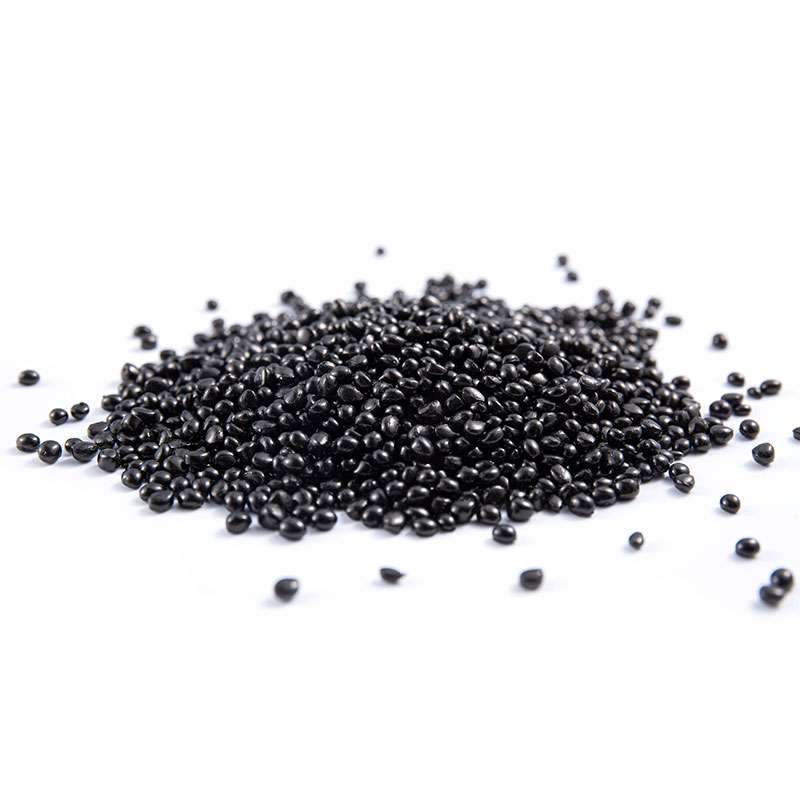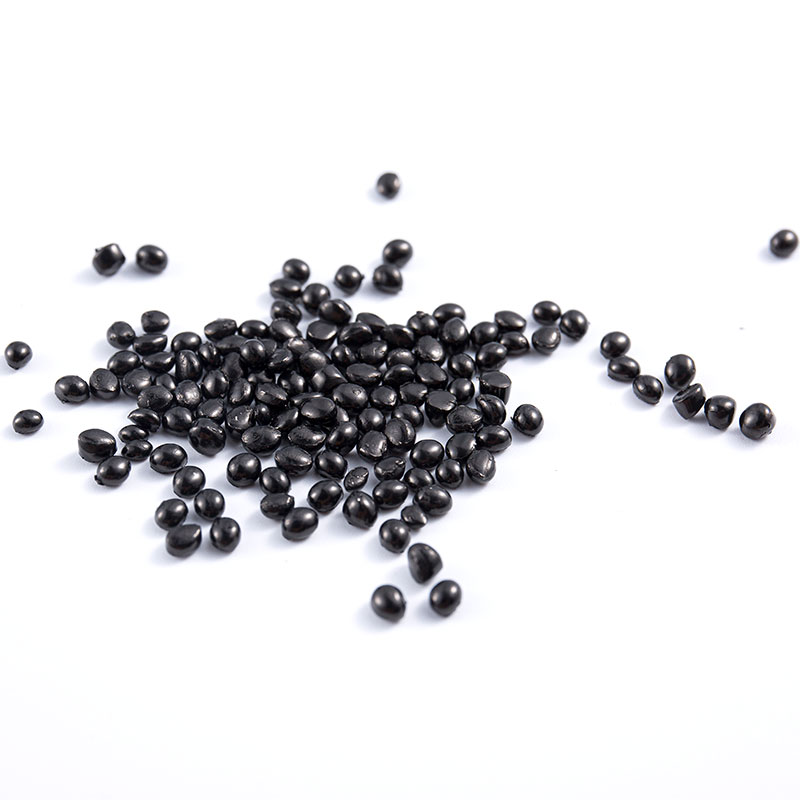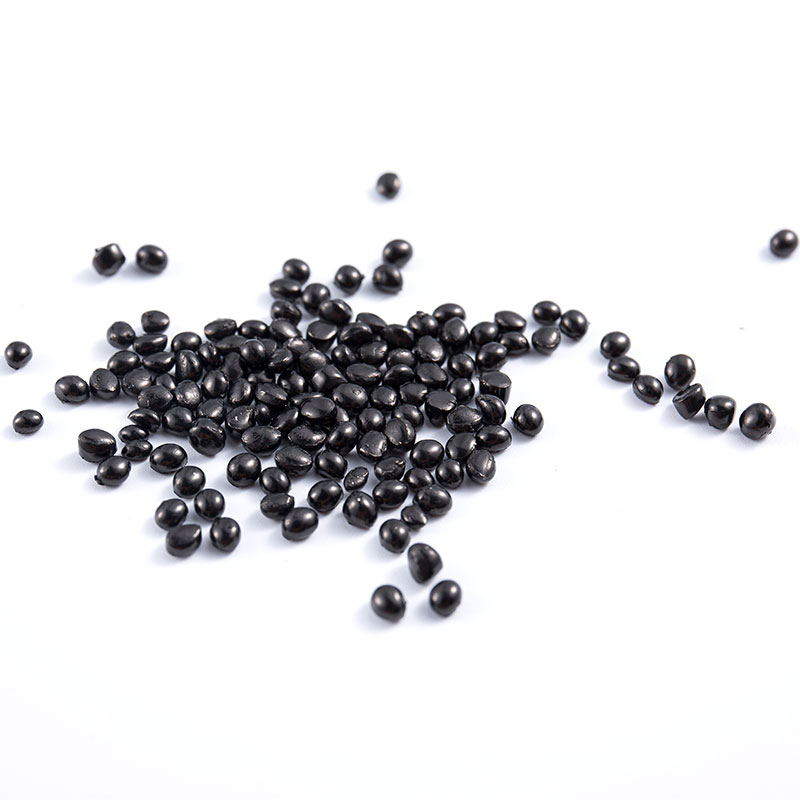Does the Pipe Grade Black Masterbatch Possess Good Weather Resistance and UV Resistance?
Background of Pipe Grade Black Masterbatch in Modern Polymer Processing
Pipe grade black masterbatch is widely used in the production of polyethylene and polypropylene pipes intended for water distribution, irrigation, cable protection, drainage and industrial transport systems. In these applications, long-term resistance to outdoor weather, sunlight exposure and thermal variations is essential.
As global infrastructure projects increasingly require materials with stable outdoor durability, the formulation of pipe grade black masterbatch must meet stringent requirements in terms of UV stability, carbon black dispersion and resistance to environmental factors. E-LUCK, through ongoing material research and controlled production processes, develops black masterbatch designed to support these technical demands. Instead of merely providing coloration, the company’s formulations are engineered to help extend the life cycle of pipe systems that operate under challenging conditions.
Influence of Carbon Black on Weather and UV Resistance
Carbon black is the key functional component responsible for both color and UV protection in pipe grade black masterbatch. Its particle structure, size distribution and purity contribute directly to the level of protection it can offer.For pipe applications, a balanced carbon black grade with appropriate surface activity helps absorb and neutralize UV radiation before it reaches the polymer chains. This prevents molecular scission and slows down oxidative degradation. E-LUCK selects carbon black types specifically suited for outdoor-grade and pressure-rated pipes, ensuring that the final product achieves stable UV absorption without creating excessive melt viscosity that might interfere with pipe extrusion.
Importance of Dispersion Quality for Long-Term Durability
Even when high-quality carbon black is used, improper dispersion can lead to uneven UV resistance across the pipe wall. Localized agglomerates can cause weak spots that accelerate cracking or surface chalking.E-LUCK’s dispersion technology plays a central role in achieving a uniform distribution of carbon black throughout the carrier resin. By maintaining consistent particle separation and preventing re-agglomeration during extrusion, the black masterbatch supports a pipe structure with predictable performance. This uniformity is essential for pipes installed outdoors for extended periods, especially in regions with intense sunlight or large seasonal temperature fluctuations.
Carrier Resin Compatibility and Its Impact on Weather Resistance
The carrier resin used in pipe grade black masterbatch must integrate smoothly with the base polymer of the pipe. Incompatible carriers can create phase separation or weak interfaces that reduce the overall weathering performance.
Pipe systems often rely on PE80, PE100 or other high-density polyethylene grades with long-term hydrostatic strength requirements. E-LUCK aligns the molecular characteristics of the carrier resin with these base materials, improving melt flow behavior and ensuring that carbon black remains evenly distributed throughout the pipe. This compatibility also helps reduce the risk of internal stresses and slow crack growth when pipes operate under outdoor conditions.
Mechanisms of UV Degradation in Polyolefin Pipes
Polyolefin pipes exposed to sunlight undergo photo-oxidation, which affects structural integrity over time. Without protective additives, UV rays can break polymer chains and alter surface properties.Pipe grade black masterbatch slows this process by absorbing UV photons and converting them into heat that dissipates harmlessly within the polymer. The active carbon black surface also helps shield deeper layers of the pipe wall from oxidation. E-LUCK designs its formulations to create a stable protective barrier across the entire pipe thickness, helping maintain strength in applications where continuous exposure is unavoidable.
Influence of Weather Conditions Beyond UV Exposure
Weather resistance involves more than sunlight protection. Pipes operating outdoors must withstand humidity, rain, temperature swings and intermittent mechanical loading. These factors may accelerate fatigue or support the formation of micro-defects if the pipe material lacks sufficient reinforcement.The balanced formulation of pipe grade black masterbatch helps stabilize the polymer matrix, reducing brittleness that can occur under combined UV and thermal stress. E-LUCK reinforces this performance through precise mixing and quality control protocols that ensure consistent additive concentration in every batch.
Long-Term Aging Performance of Pipe Grade Black Masterbatch
Aging performance refers to how pipes retain their physical and mechanical properties during long-term service. For water supply, irrigation or electrical conduit systems, long-term strength and structural reliability are primary considerations.E-LUCK conducts evaluations on long-term color retention, surface stability and resistance to oxidative degradation. The company’s emphasis on consistent formulation allows pipe manufacturers to achieve predictable long-term performance even in challenging climates. This is particularly relevant for pipes installed without protective coverings, where the black masterbatch becomes the primary shield against environmental factors.
Industrial Requirements for UV-Stable Pipe Materials
International standards such as ISO 4427, ISO 4437, ASTM D3350 and DIN 8074 outline the performance levels required for pressure and non-pressure pipes. These standards include provisions for UV resistance, physical strength, slow crack growth and long-term hydrostatic performance.To meet these requirements, pipe grade black masterbatch must maintain consistent pigment loading, fineness of dispersion and thermal stability. E-LUCK integrates stringent batch testing procedures that contribute to compliance with such specifications. The company’s controlled carbon black content and resin purity support the development of pipes that align with recognized global standards.
Relationship Between Extrusion Conditions and UV Protection
Extrusion parameters such as temperature profile, screw configuration and die pressure influence how the masterbatch disperses in the melt. Improper processing may generate surface streaks or thin regions with reduced carbon black concentration.E-LUCK develops formulations optimized to process smoothly under various extrusion setups. This stability helps maintain consistent wall thickness and surface appearance, which directly contribute to UV and weather resistance. Manufacturers benefit from reduced adjustment time and improved efficiency, especially when producing long continuous pipe sections.
Testing Methods to Evaluate Weather Resistance
Pipes formulated with pipe grade black masterbatch are tested using accelerated weathering equipment, UV exposure chambers and outdoor field tests. These tests evaluate surface cracking, gloss loss, color change and mechanical strength retention.
Below is a table summarizing typical evaluation methods:
| Test Category |
Purpose |
Typical Indicators |
| Accelerated UV Exposure |
Simulates long-term sunlight effects |
Surface chalking, discoloration |
| Thermal Cycling Test |
Assesses resistance to temperature fluctuations |
Dimensional stability, crack formation |
| Mechanical Retention Test |
Measures strength after weathering |
Tensile strength, elongation |
| Oxidation Induction Time (OIT) |
Evaluates resistance to thermal oxidation |
Onset time of decomposition |
Interaction Between Pipe Thickness and UV Protection Efficiency
Pipe wall thickness influences the depth of UV penetration. Thicker pipes naturally provide more shielding, but the uniformity of the black masterbatch within the matrix remains essential.E-LUCK’s masterbatch helps ensure homogenous dispersion across both thin-walled irrigation pipes and thick-walled pressure pipes. This uniformity supports predictable material behavior and reduces the likelihood of weak zones, regardless of pipe dimensions.
Considerations for Outdoor-Installed Irrigation and Agricultural Pipes
Agricultural regions often experience intense sunlight combined with fluctuating moisture conditions. Irrigation pipes made from HDPE or MDPE are frequently exposed to soil chemicals, fertilizers and mechanical stress from field operations.Pipe grade black masterbatch must therefore deliver stable UV protection and maintain flexibility. E-LUCK evaluates chemical resistance and thermal stability to ensure that its formulations support agricultural pipes throughout repeated seasonal cycles.
Application in Cable Conduit and Communication Infrastructure
Cable protection pipes installed along roadways or rooftops require long-term UV and weather resistance to protect internal wiring. Surface degradation could lead to water ingress or structural weakening.By integrating stable carbon black and optimized dispersants, E-LUCK’s pipe grade black masterbatch supports the weathering performance needed for conduit systems. The predictable thermal behavior also assists in maintaining dimensional consistency during installation where bending and pulling forces occur.
Comparison of Weather Resistance Between Pipe Grades
Different types of pipe systems have varying requirements for weather and UV resistance. The table below summarizes general differences among common pipe types:
| Pipe Type |
UV Resistance Requirement |
Weather Exposure Level |
| Pressure Water Pipes |
High |
Moderate to High |
| Irrigation Pipes |
High |
Very High |
| Cable Protection Conduits |
Moderate to High |
High |
| Drainage Pipes |
Moderate |
Low to Moderate |

 English
English Español
Español














